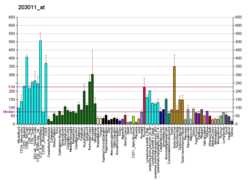As a drug target
Inhibition of IMPA1 can produce pleiotropic effects on cellular function, including alterations in phosphoinositide signalling, [15] autophagy, apoptosis, [16] and other processes.
L-690,330 is a competitive inhibitor of IMPase with high activity in in vitro assays, but it exhibits limited bioavailability in vivo. [17] Owing to its increased specificity relative to lithium, L-690,330 has been widely used to investigate the effects of IMPase inhibition in various cell culture systems. A more cell-permeable prodrug, L-690,488, has also been developed. Treatment of cortical slices with L-690,488 leads to accumulation of inositol, confirming the activity of this inhibitor in tissue. [18]













